Enterocolitis
Enterocolitis (tzv. “žbluňkavka”, enterokolitida) králíků je onemocnění, jenž bylo objeveno v západní Francii koncem roku 1996. V letech 1997 a 1998 se prudce rozšířilo do ostatních států Evropy. V současné době se vyskytuje v 90 – 95 % chovů v Evropě s různou intenzitou manifestace klinických příznaků.
Onemocnění má rychlý perakutní (velmi prudký) až akutní průběh a vyznačuje se vysokou mortalitou (30 – 80%). Prvním příznakem bývá pokles příjmu krmiva. Následují apatie a plynatost. K typickým klinickým příznakům se řadí malé množství vodnatého průjmu. Značným problémem pro chovatele je, že terapie běžnými antibiotiky není účinná.
Nejčastěji postiženi jsou králíci po odstavu (ve věku 6 – 14 týdnů). Nezřídka touto chorobou trpí i chovná zvířata, někdy i sající králíčata.
První domněnky o příčině
Pochopitelně jako u všech onemocněních zažívacího traktu chovatelé nejdříve hledali problémy v krmivu. Především ve faremních chovech, kde jsou králíci krmeni pouze kompletní krmnou směsí se často domnívali, že problém je ve složení, obsahu jednotlivých komponent nebo složení premixu. Chovatelé a veterináři také hledali příčinu onemocnění v obsahu mykotoxinů, pesticidů v krmné směsi apod.
Všechny tyto hypotézy byly postupně eliminovány. Vyvráceny byly úspěšnou experimentální infekcí zdravých králíků zažitinou z uhynulých a nemocných králíků s příznaky enterocolitis. Momentálně se uvažuje jen o spolupůsobení výše uvedených faktorů na onemocnění enterocolitis.
Příčiny
Jedná se o polyfaktoriální onemocnění zřejmě způsobené:
– viry: Rotaviry (skupina virů způsobující zejména akutní průjmová onemocnění), Caliciviry(drobné viry způsobující průjmová onemocnění), Parvoviry(skupina DNA virů), Cirkoviry;
– bakterie: E.coli, clostridium (rod grampozitivních anaerobních bakterií schopných vytvářet spóry a tak dlouho přežívat např. v půdě. Jsou široce rozšířené v trávícím traktu savců.), klebsiela (bakterie způsobující záněty a hnisavá onemocnění), ostatní (enterobaktericea, streptokoky);
– paraziti: pasaralus, coccidia.
Na onemocnění se dále podílí ostatní neinfekční faktory. Mnohé z nich jsou ovlivnitelné i chovatelem. Jedná se zejména o hygienu chovu, ošetřovatelskou péči či kvalitu krmení.
Šíření onemocnění
Přenos je pouze horizontálně přímý či nepřímý, tzn.:
– kontakt zdravých a nemocných zvířat (velmi často vidíme v chovem ohniskové propukání onemocnění, kdy onemocní zvířata v sousedních klecích);
– kontaminace klece, nářadí, krmítka apod.;
– chovatel.
Klinické příznaky
a) primární – u nemocných zvířat postupně pozorujeme nechutenství, apatii, distenzi břicha a plynatost, zácpu, hlen ve výkalech.
b) sekundární – průjem a úhyn.
Patologicko – anatomický nález
Při pitvě nalézáme stázu (zastavení) zažitiny v žaludku. Žaludek bývá naplněn řídkou kašovitou natráveninou s velkým obsahem plynu.
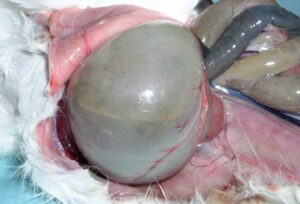
Tenká i tlustá střeva jsou dilatována (rozšířena) a naplněna plynem. V 40 – 60 % případů jsou naplněna hlenem. Sliznice je bez makroskopicky viditelných změn.
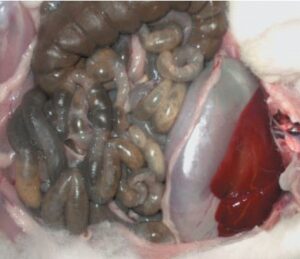
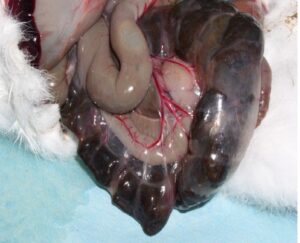
Chovatelská opatření
Jako u všech onemocnění je i u onemocnění enterocolitis základem prevence!
Velice důležitý je stav imunitního systému zvířete (správná vakcinace proti moru, myxomatoze, pasterelle). Nutná je dokonalá hygiena chovu, dezinfekce chovného zařízení, krmítek, kotišť apod.
Vznik onemocnění ovlivňuje také kvalita a způsob krmení. V této souvislosti je nutné zdůraznit pravidelné krmení raději v menších dávkách, pozvolné přechody krmení a maximálně minimalizovat změny krmiv. Velice důležité je též okyselení vody na pH 4,2.
Použitá literatura a další prameny:
D. Licois, P. Coudert. Le point des recherches sur l’enterocolite épizootique du lapin. 8èmes journées de la recherche cunicole. Paris, 9-10juin 1999. Séance pathologie : Ed ITAVI 33-36
http://www.tours.inra.fr/urbase/internet/resultats/enterocolite/richard.htm
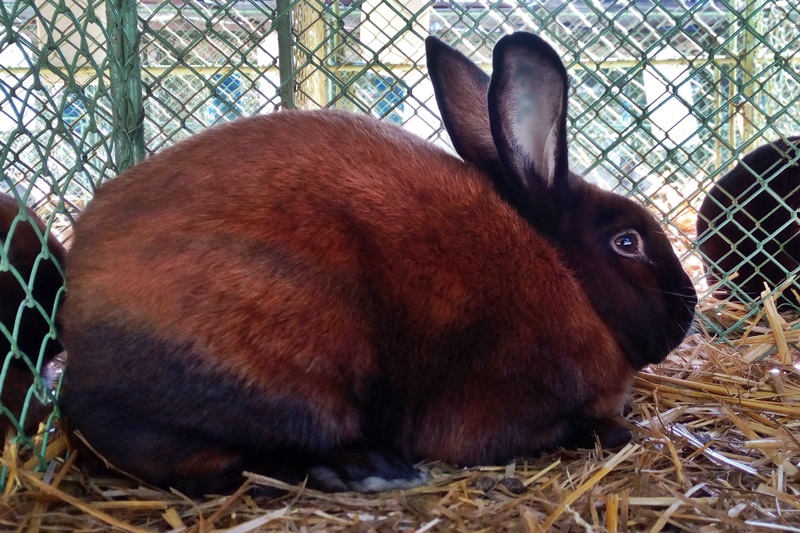
Related posts
10. April 2024
Keeping dwarf rabbits as pets is becoming increasingly popular. It does not require a lot of space and is ideal for people who live in smaller homes or apartments. Dwarf rabbits are also very friendly, so it’s no wonder that people are choosing them for this purpose more and more often. As with all animals,…
30. August 2022
In this article we will discuss several rabbit diseases – ear scab, tyzzer’s disease and heat stress.
24. August 2022
In this article we look at two diseases – e.Coli and enterocolitis.
2. August 2022
In this article we look at two common rabbit diseases, myxomatosis and infectious rhinitis.
13. July 2022
In the following article we will discuss rabbit plague – rhd or vhd (viral haemorrhagic disease of rabbits).
Related products
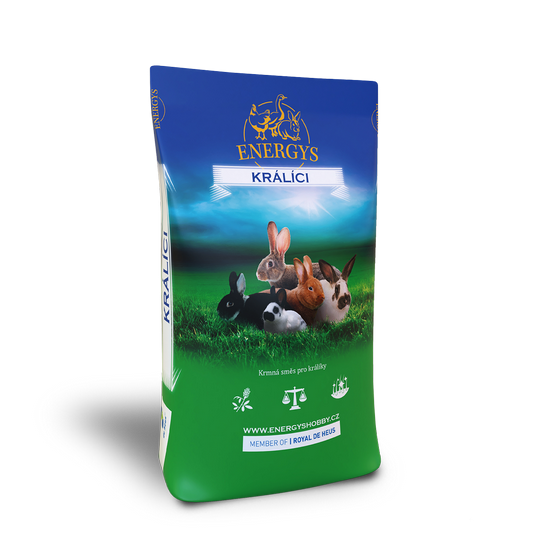
RABBIT DWART
Complete pelleted feed for dwarf rabbits with high digestibility. It contains a high proportion of fibre (high alfalfa and grass cake content) and a reduced sugar and starch content. Contains flaxseed, which has a positive effect on coat quality. Suitable for daily feeding. We recommend providing rabbits with safe fresh water and hay.

RABBIT CHAMPION
Feed for show rabbits, does not include Coccidiostat. A unique mix significantly supports the quality and growth of fur. Serve when moulting and at least two months before the start of the show season.

RABBIT GOLD FORTE
A premium feed mix in an ideal make up for gestating and breast feeding females. For the intensive fattening of rabbits for a period of up to 5 days before slaughter. It supports fast growth, meat content and an excellent state of health. It contains a coccidiostat which lowers the risk of mortality.

RABBIT KLASIK FORTE
Intended for the fattening of rabbits up to a point at least 5 days before slaughter. Suitable for attaining a high meat content and an excellent state of health. Thanks to its Coccidiostat content it lowers the animals mortality.

RABBIT KLASIK
For the final phase of rabbit fattening, a minimum of 5 days before slaughter. It supports high meat content and excellent taste qualities in rabbit meat. Without a coccidiostat.

RABBIT START
For young rabbits from the start of accepting feed to 4-6 weeks after weaning. The feed helps to significantly lower the death rate in the period around weaning. It contains a raised percentage of fibre and less starch. It does not contain a coccidiostat.
